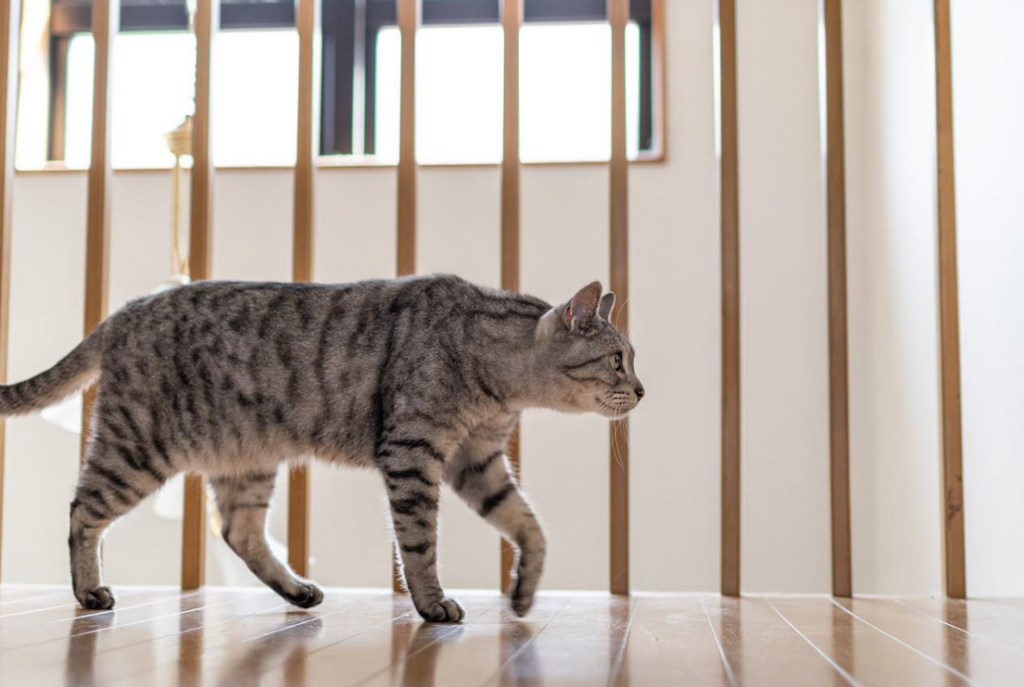By: Kaelyn Lacefield
While often seen as independent and low-maintenance pets, cats can exhibit various behavior problems that can be frustrating for their owners. Understanding the root causes of these behaviors and how to address them can make living with your feline friend much more enjoyable. Here are some common cat behavior problems and tips on addressing them.
Scratching Furniture
Why It Happens: Cats scratch to mark their territory, sharpen their claws, and stretch their muscles.
How to Address It:
- Provide Alternatives: Offer plenty of scratching posts or pads around your home. Choose sturdy ones covered in materials like sisal, which cats love to scratch.
- Placement Matters: Place scratching posts near the areas where your cat likes to scratch.
- Positive Reinforcement: Reward your cat with treats or affection when they use the scratching post.
- Protect Furniture: Use double-sided tape or furniture covers to make your furniture less appealing to scratch.
Litter Box Issues
Why It Happens: Cats may avoid the litter box due to cleanliness, location, or health issues.
How to Address It:
- Keep It Clean: Scoop the litter box daily and change the litter regularly.
- Suitable Location: Place the litter box in a quiet, accessible location. Avoid areas with loud noises or heavy foot traffic.
- Health Check: If your cat suddenly stops using the litter box, visiting the vet may be necessary to rule out medical issues.
- Litter Type: Experiment with different types of litter to find one your cat prefers.

Aggression Towards People or Other Pets
Why It Happens: Aggression can stem from fear, territoriality, or socialization issues.
How to Address It:
- Identify Triggers: Observe what triggers your cat’s aggression and try to avoid those situations.
- Safe Spaces: Provide your cat safe spaces to retreat and feel secure.
- Gradual Introduction: If introducing a new pet, gradually allow your cat time to adjust.
- Professional Help: In cases of severe aggression, consulting a veterinarian or a professional animal behaviorist can be beneficial.
Spraying and Marking
Why It Happens: Spraying is often a territorial behavior or a stress response.
How to Address It:
- Neutering/Spaying: Spaying or neutering can reduce or eliminate spraying in many cats.
- Reduce Stress: Minimize stress by providing a stable environment and routine.
- Clean Thoroughly: Clean sprayed areas thoroughly with an enzymatic cleaner to remove scent markers.
- Increase Resources: Provide more litter boxes, scratching posts, and vertical spaces to reduce territorial disputes.
Excessive Meowing
Why It Happens: Cats may meow excessively due to hunger, attention-seeking, or health issues.
How to Address It:
- Regular Feeding Schedule: Maintain a consistent feeding schedule to reduce hunger-related meowing.
- Interactive Play: Ensure your cat gets plenty of interactive playtime to minimize boredom.
- Ignore Attention-Seeking: Avoid rewarding excessive meowing with attention. Instead, reward quiet behavior.
- Health Check: If meowing is sudden or unusual, consult your vet to rule out medical issues.
Nighttime Activity
Why It Happens: Cats are naturally nocturnal, but excessive nighttime activity can disrupt sleep.
How to Address It:
- Evening Play Sessions: Engage your cat in vigorous play sessions before bedtime to tire them out.
- Feeding Schedule: Provide a small meal before bed to help them settle.
- Ignore Attention-Seeking: If your cat wakes you up, avoid reinforcing the behavior by getting up or feeding them.
Understanding your cat’s behavior and taking proactive steps to address issues can foster a harmonious living environment for you and your feline friend. Patience and consistency are essential when working with your cat on behavior problems.


